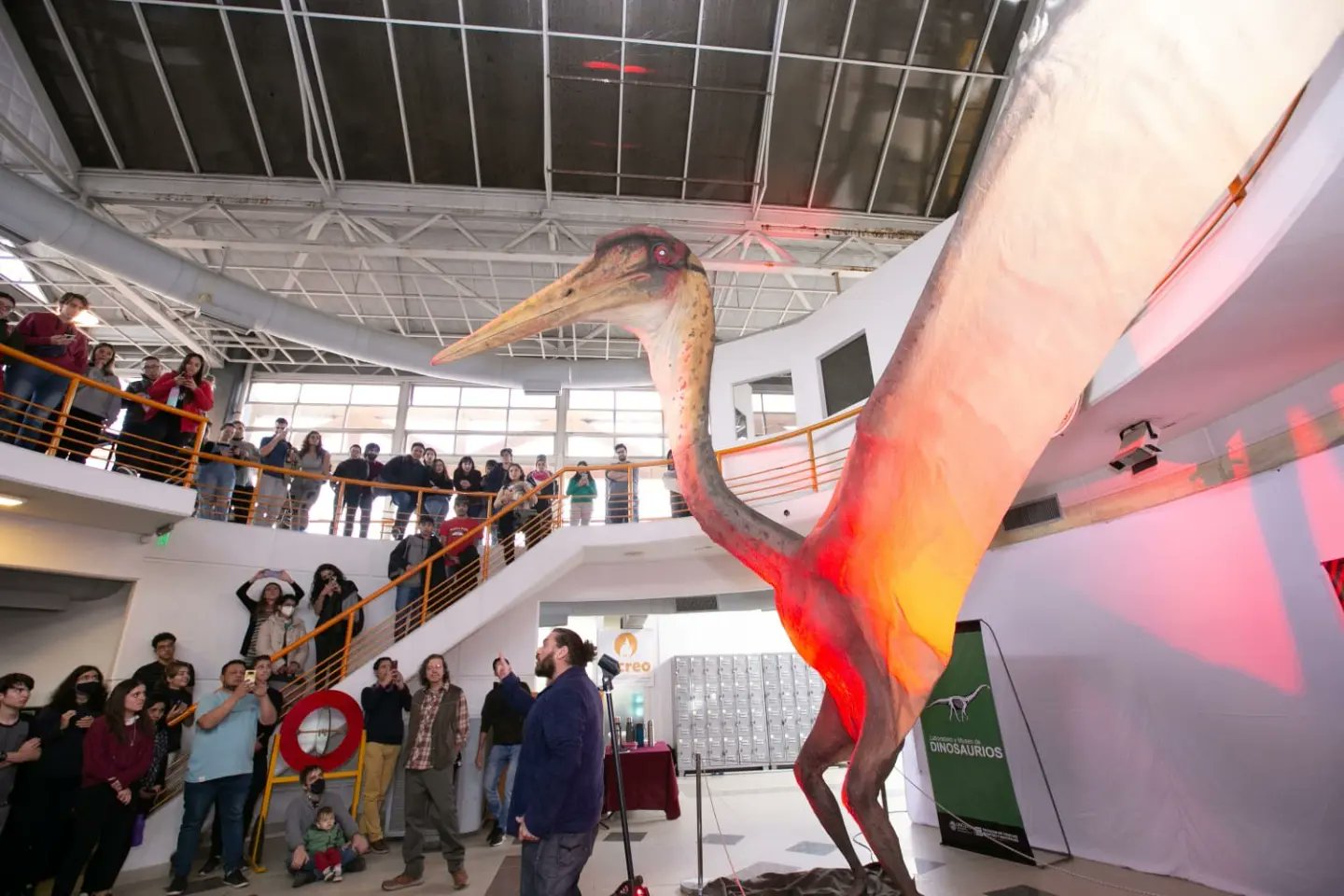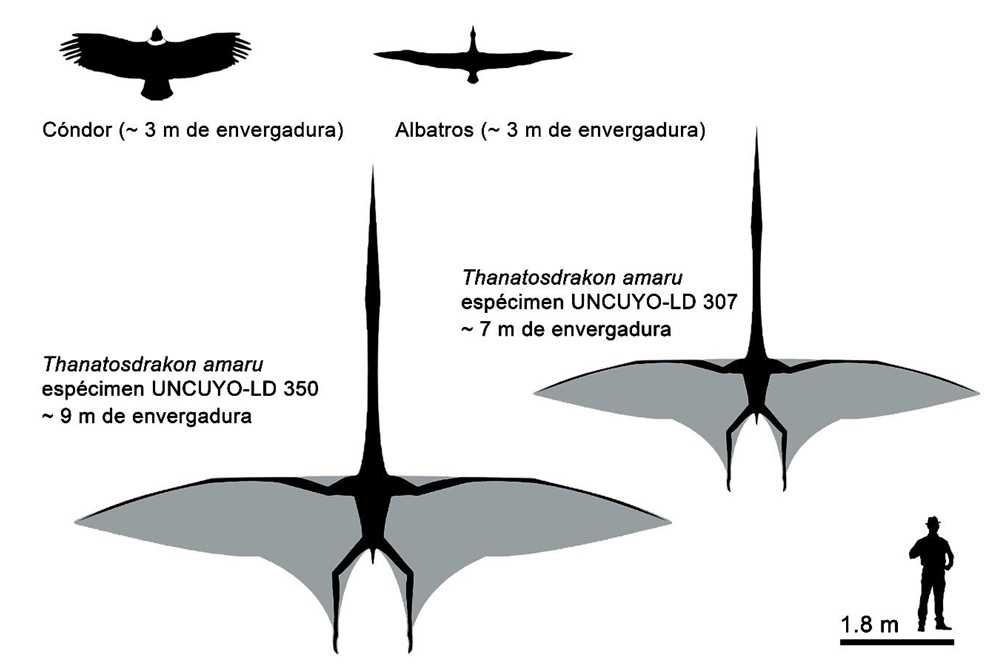
Fossil remains of a type of flying reptile 250-66 million years old and nine meters long, the largest in South America according to researchers, were presented to the public on Friday by members Faculty of Exact and Natural Sciences Based on The Interdisciplinary Institute of Basic Sciences of Koyo National University (Uncuyo), reported that studies house.
It’s about “pterosaurs(Flying reptiles), an extinct order of flying archosaurs that existed for almost the entire Mesozoic Era and were the first vertebrates to conquer the air, according to experts.
According to the information that could be collected from the remains of this reptile, Its wings consisted of a complex membrane supported by the fourth finger of the hand, which was enlarged.
dinosaur, baptized”Thanatosdracon Amaro‘, in the auditorium of that college, in Parque San Martin in the city of Mendoza before Bernardo Gonzalez Riga s Leonardo Ortizresponsible for the discovery and members of the Dinosaur Museum and Laboratory of the aforementioned studies house.
The fossil bone of this specimen They are found in outcrops located in the south of the county, in sediments near the Colorado Riverin rocks from the end of the Cretaceous period, estimated to be 86 million years old.
The remains were found and preserved in the rescue operation conducted during the civil worksTherefore, the researchers highlighted the importance of heritage protection measures while carrying out work at sites with high paleontological potential.

The excavation and sample extraction tasks were coordinated by Ortizwho serves as general coordinator of the Dinosaur Laboratory and Museum, and is also a postdoctoral fellow at the Interdisciplinary Institute for Basic Sciences in Onkyo.
After years of searching, The expert-coordinated team was able to determine that the studied remains correspond to a new type of pterosaur Because the bones present unique properties not seen in other specimens of the same reptiles found in other parts of the world.
The fossils, exceptionally well preserved, belonged to the axial skeleton (vertebrae) and appendicular skeleton (bones of the anterior and hind limbs) of two of these new specimens..
Pterosaurs were a very unique group of animals that lived from the Triassic to the Cretaceous period and represented the first vertebrates to gain the ability to actively fly. “They are generally confused with dinosaurs, which are a closely related group,” Ortiz said.

As detailed by the local headquarters of Kunst, The largest specimen of that of Mendoza has a wingspan of about 9 meters, while that of the smallest is about 7 meters.
Another relevant aspect is the state of preservation of the fossil remains, as it is unusual to find so many bones of such large pterosaurs in such a well-preserved state. This aspect is crucial, since Thanosdracon Preserves items that have not been discovered before in others Azdarkism Giants,” the researcher highlighted, as denounced by the state agency.
The Mesozoic Era is known as the “Age of Reptiles” for being the dominant group of vertebrates on land and seas and it lasted between 250 and 66 million years. During that time the large reptiles known as dinosaurs were in their heyday.
Read on:

“Beeraholic. Friend of animals everywhere. Evil web scholar. Zombie maven.”
